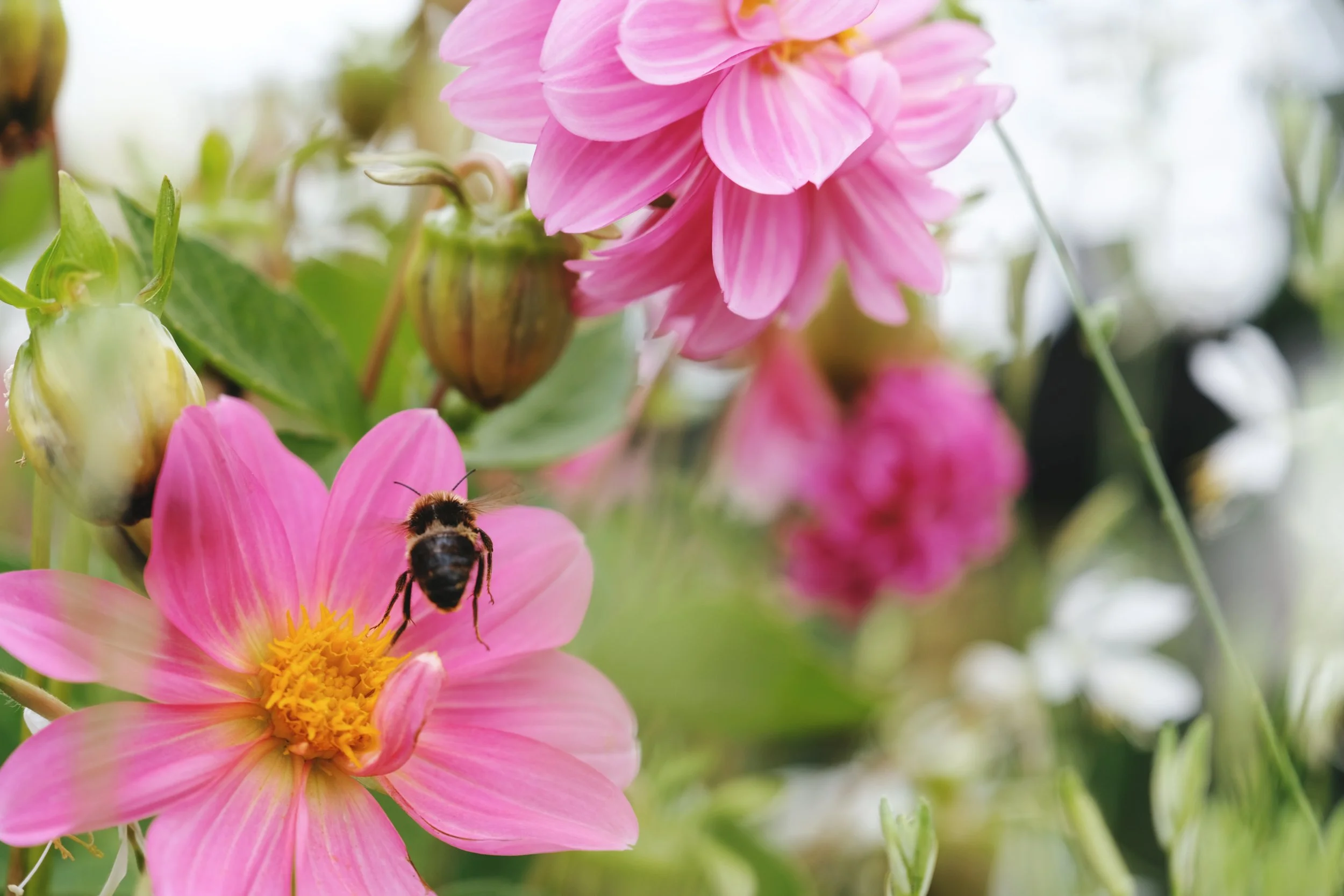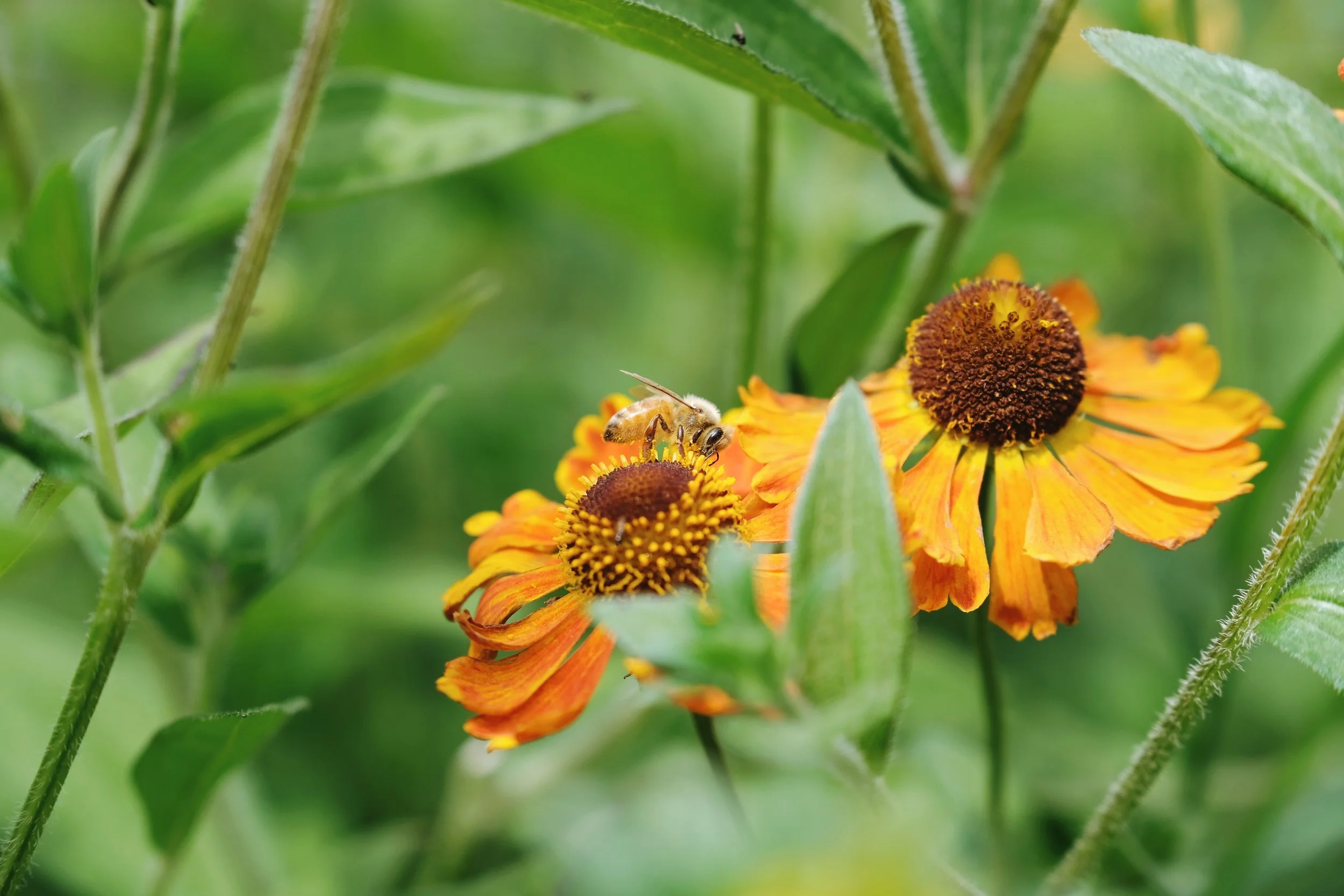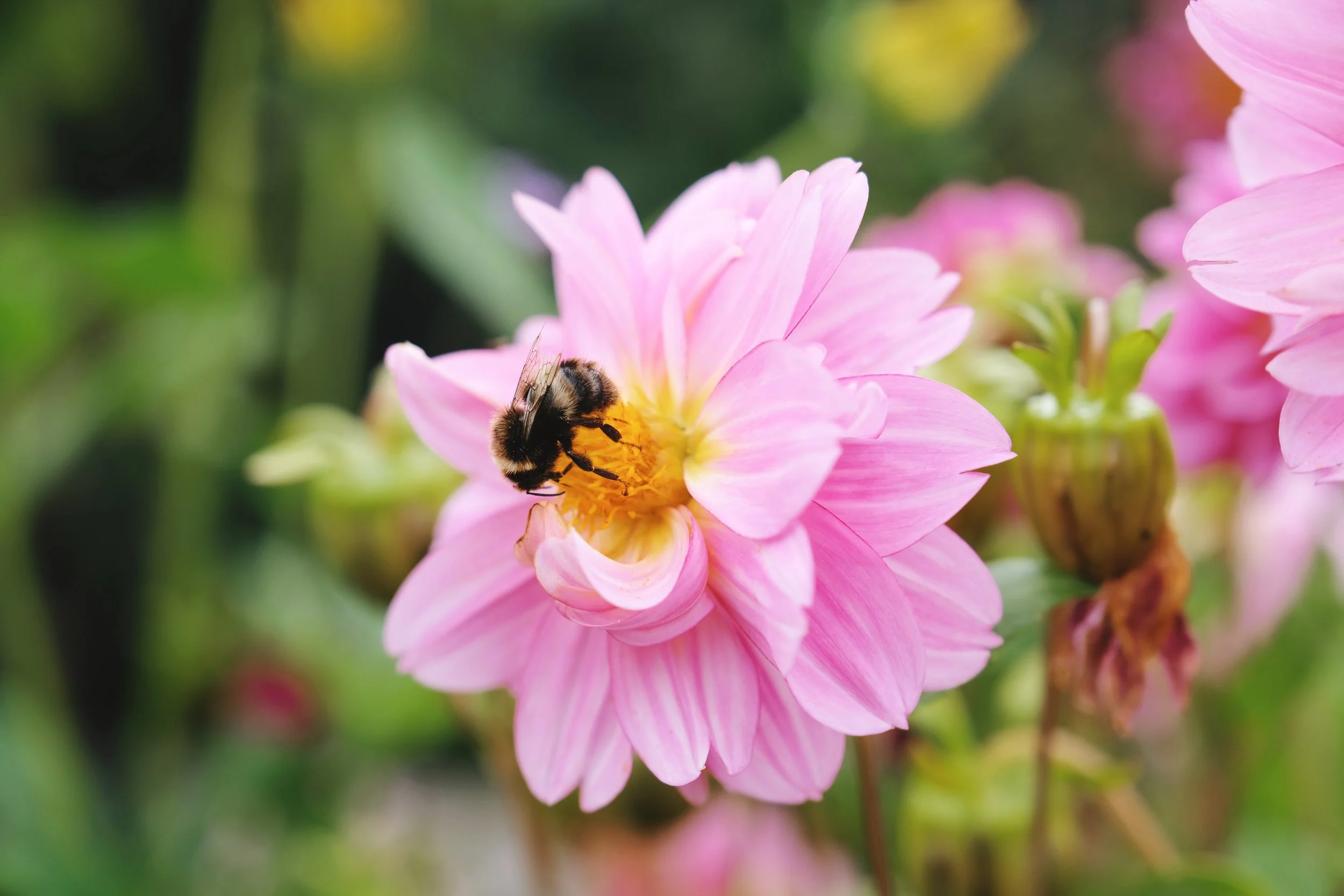A beginners guide to pollination
/Thanks to the basic botany taught in classrooms everywhere, as a child I could confidently identify the anthers, stamens and reproductive workings of a flower including a simplistic description of the process of pollination. It was practically a rite of passage for primary school students in New Zealand. To be fair, much of that information was later smothered by less important, consuming knowledge needed for adulthood and it wasn’t until I started gardening that it bubbled back to the surface.
With my reattachment to the natural world and her processes through the making of my own garden in my mid-thirties, I’ve enjoyed observing the increased movement of bees around my beds, knowing that this is indeed a good thing. On occasion, I have even felt the need to justify my focus on flower gardening (as opposed to food growing) by finishing descriptions of my garden with “Of course, I grow flowers for the pollinators…you know”. If nothing else, the fact that one in three mouthfuls of food we eat are the result of animal pollination, drives home our reliance on such beasts and flower growing supports their sustenance!
To drag you back to your classroom roots, the process of pollination is described as the transferral of a plants pollen (plant sperm) from the anther (part of the stamen which is the male anatomy of a flower) to the stigma, (part of the pistil which is the female anatomy of the flower). The result is fertilisation and the ability for a plant to be able to create fruit and/or seeds.
Yes, this is botanical sex, but with a third party in support - the pollinator.
The transfer of pollen can be aided by wind and water or by insects and mammals. Plants have evolved in a way that ensures the ongoing diversification and health of their own species, designing themselves to appeal specifically to the pollinator that best suits their conditions and needs. Their fragrance, colour, shape and even flowering time is directly marketing to the preferences of their chosen pollinator who is on the lookout for sources of delicious nectar and nutritious pollen. We are just the lucky bystanders that admire and sometimes host the activity.
Most plants prefer to be pollinated with pollen from another of their own species, this is called ‘cross-pollination’.
A flowers fertilisation from either their own pollen or that from another flower on the same plant can result in poor seed production and less vigorous seedlings. This is called ‘selfing’, essentially inbreeding and at times hard for the plant to avoid.
Some plants, like flax which is dominantly pollinated by tui, try to reduce ‘selfing’ by ripening their anther a few weeks before their stigma. This plant would be considered monoecious like most of our flowering garden plants, where it has both male and female elements to a single flower, categorising it as bisexual.
Other monoecious plants like most cucurbits and corn differ in that they produce separate male and female flowers on the same plant, sometimes as different times, which is considered unisexual.
In addition, plants like the kiwi, cannabis and many trees produce only male or only female parts on entirely separate specimens. These are referred to as dioecious and in public planting, male trees are often chosen to avoid the mess of flowers and fruit. The flip side is that there will be a high density of pollen which makes life tricky for those with hay fever!
Bee on helenium
Effective pollination is made much easier if we take into account the habits of some of our most common pollinators.
For instance, each separate foraging trip that a honeybee makes is focused on a single plant type (this was news to me!). News of good nectar and pollen sources is shared between bees in the form of the Waggle Dance. A bee will waggle and turn its body to describe the distance, direction and type of plant that its fellow foragers should explore.
These trips will involve visiting between 50 – 100 flowers on their mission to collect pollen, loaded with essential nutrients for young bee larvae, while concurrently feasting on nectar for their own energy reserves. While most pollen is stored neatly into their leg pouches for home delivery, their busy, industrious activity results in their hairy bodies being coated with excess pollen. This is subsequently dragged and dropped across stigma’s, completing the desired process plants are in need of!
Bumblebee feasting on a dahlia
In contrast I was intrigued to find that bumblebees provide a similar but turbo boosted service that is desirable for many plants, including tomatoes, blueberries, eggplants and amongst others. These plants don’t give up their pollen quite as easily and require a close contact, vibration frequency to release it. This is called ‘buzz pollination’ (sonication) and where the bumble bee reigns supreme! Listen closely for that furious bumblebee buzzing next time you’re in the garden.
A green soldier fly working its way around an eryngium flower head
Halfway through writing this piece I took myself outside to observe my own pollinator crew in the action.
I spent an hour with my nose at bloom level, swapping my close observations between my eyes, my camera and the slow-mo video setting on my phone. It was truly fascinating and I marvelled at the challenges faced by each pollinator as they navigated the vast diversity in flower architecture.
By far and wide the plants receiving the most attention in the garden, including regular clashes on arrival between the bossy bumble bees and nippy bees, were the single petal dahlias, the echinacea and the helenium. My sanguisorba crop, with its dense flower heads didn’t seem popular at all which I felt was understanding!
What’s more, for the first time, I noticed the occasional metallic, green soldier fly quietly picking over my astrantia and eryngium, approaching their work with a little less gusto than their busier, larger competition. It hadn’t really dawned on me that flies, along with butterflys and moths are important contributors to the pollination circus!
I encourage you to take some time out and see who the pollinators are in your own garden. It’s a busy, productive and beautiful workplace to look in on.
This is an expanded version of the article featured in my Stuff ‘Homed’ gardening column for beginners , The Press, Dominion Post and other regional papers on February 7th 2022
All words and images are my own, taken in my home and garden in Christchurch, New Zealand unless otherwise captioned.






